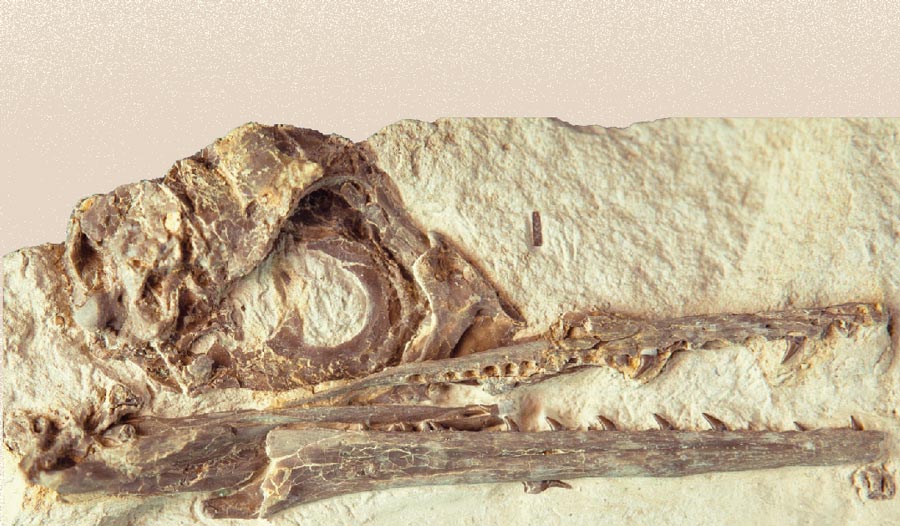Big Brains May Have Helped Birds Survive Dinosaur-Killing Asteroid

Fossils of early birds almost always have crushed skulls, but this newly discovered Ichthyornis specimen has a mostly intact skull that preserves details of the brain.
C. R. Torres (Ohio University)
(Inside Science) -- Just a few million years before an asteroid killed nearly all dinosaurs on Earth, a creature resembling a small albatross with teeth flew through the Cretaceous skies. The creature, known as Ichthyornis, is considered an early bird -- but not part of the lucky lineage that survived the mass extinction and gave rise to modern birds.
Now, a newly discovered Ichthyornis fossil sheds light on why some early birds survived the asteroid-triggered catastrophe known as the K-Pg extinction, while close relatives like Ichthyornis perished. The key may have been a vastly expanded forebrain -- a trait that all modern birds possess, but Ichthyornis and other extinct lineages lack.
The earliest known bird is Archaeopteryx, which lived about 84 million years before the K-Pg extinction. Archaeopteryx shared a similar brain shape with nonbird dinosaurs and reptiles, with the cerebellum and optic lobes arranged in a straight line behind a modest-sized forebrain. In contrast, the forebrains of all modern birds are hugely enlarged, spreading above the optic lobes and pushing the whole brain into a new arrangement.
There are dozens of other known bird species that lived between Archaeopteryx and the K-Pg extinction, but until now, researchers had no idea how their brains were shaped. That's because bird skeletons are extremely brittle, and none of the other surviving fossils were preserved in enough detail.
"Usually one of the first things that happens is the skull gets crushed," said Christopher Torres, a paleo-ornithologist at Ohio University in Athens. "What makes our new specimen of Ichthyornis so special is that it preserves a nearly complete skull."
Ichthyornis is one of the closest known relatives of living birds, and the new specimen lived just 5 million years before the K-Pg extinction. Thus, it likely shared many traits with the ancestors of modern birds. But Torres and his colleagues found that it had a relatively small forebrain, like Archaeopteryx and more distantly related dinosaurs.
There were probably multiple factors that helped the ancestors of modern birds survive, noted Torres. Still, the new findings suggest an enlarged forebrain could be part of what gave them their edge. The forebrain orchestrates many high-level cognitive tasks, and it tends to be enlarged in highly intelligent animals. Torres suspects that early birds with big forebrains were better able to change their behavior in response to the chaotic climate conditions following the asteroid impact.
"Because the ancestor of living birds already had that expanded forebrain, it was uniquely capable -- it was uniquely prepared to modify its own behavior in the face of these rapidly changing circumstances," he said.
The findings were published today in the journal Science Advances.

